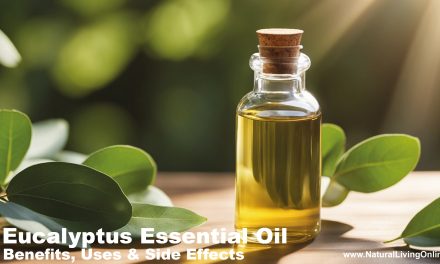Catnip essential oil has a variety of benefits and uses that make it a valuable addition to any natural health regimen. Its most well-known use is as a folk remedy for colds and flu, but it can also be used to soothe stomach upset, relieve pain, and even repel insects.
What is Catnip?
Catnip (Nepeta cataria) is a member of the mint family and is related to other herbs such as basil, oregano, and rosemary. The plant is native to Europe and Asia but has been naturalized to North America, where it is now a common weed in many gardens.
The herb has long been associated with cats, who seem to go crazy for its scent. In fact, the name “catnip” comes from the Latin word for “cat,” felis.
Catnip is a hardy perennial that grows to about three feet in height and has small, oval-shaped leaves. The flowers are white or pale lavender and bloom from summer to fall.
The plant is easy to grow and can be started from seed, cuttings, or division. It prefers full sun but will tolerate partial shade, and it is not particular about soil type.
Catnip can be used fresh or dried, and the leaves and stems can be used to make a tea.
Different types of Catnip:
There are two main types of catnip: common catnip (Nepeta cataria) and American wild mint (Nepeta americana). Both plants are members of the mint family and have very similar properties.
The main difference between the two is that American wild mint is more potent than common catnip. This is due to the higher concentration of nepetalactone, the active compound in catnip, in American wild mint.
How Catnip Essential Oil is made?
Catnip essential oil is made by steam distilling the leaves and flowers of the plant. The oil is a yellowish green color with a herbaceous, minty scent.
What is the botanical name of Catnip?
The botanical name of catnip is Nepeta cataria.
What are the chemical constituents of Catnip Essential Oil?
nepetalactone (40-60%), geranial (10-20%), citronellal (5-15%), nepeta ketone (2-5%), myrcene (1-5%), limonene (<1%)
What are Catnip Essential Oil benefits?
The main properties of catnip essential oil are analgesic, anti-inflammatory, antispasmodic, carminative, diaphoretic, nervine, and sedative.
What are ways to use Catnip Essential Oil?
Catnip essential oil can be used in a variety of ways. It can be diffused to help relieve stress and tension, or it can be added to a massage oil or lotion to soothe muscle pain and cold & flu.
It can also be diluted with water and sprayed on clothing or skin to repel insects.
Catnip essential oil should not be used by:
Catnip essential oil is generally considered safe for most people. However, it should be used with caution by those who are pregnant or breastfeeding, as there is not enough research on its safety during pregnancy or lactation.
People with known allergies to mints or other plants in the Lamiaceae family should also avoid catnip essential oil, as they may be allergic to this oil as well.
Catnip essential oil should also be used cautiously by those who have epilepsy or are taking medications that affect the central nervous system, as it may worsen these conditions.
How can I use Catnip Essential Oil internally?
Catnip essential oil like any other essential oil should not be used internally without the permission and supervision of a doctor.
How can I use Catnip Essential Oil topically?
Catnip essential oil can be diluted with a carrier oil and applied topically to the skin. It can also be added to lotions, creams, and ointments.
Great Essential Oil diffuser blends for aromatherapy with Catnip Essential Oil:
1. Citrus Bliss: 3 drops of catnip essential oil, 2 drops of orange essential oil, 1 drop of lemon essential oil.
2. Stress Relief: 3 drops of catnip essential oil, 2 drops of lavender essential oil, 1 drop of chamomile essential oil.
3. Headache Relief: 3 drops of catnip essential oil, 2 drops of peppermint essential oil, 1 drop of eucalyptus essential oil.
4. Sinus Support: 3 drops of catnip essential oil, 2 drops of lemon essential oil, 1 drop of rosemary essential oil.
5. Immune Support: 3 drops of catnip essential oil, 2 drops of tea tree essential oil, 1 drop of oregano essential oil.
6. Digestive Support: 3 drops of catnip essential oil, 2 drops of ginger essential oil, 1 drop of fennel essential oil.
7. Muscle Pain Relief: 3 drops of catnip essential oil, 2 drops of peppermint essential oil, 1 drop of rosemary essential oil.
How can I use Catnip Essential Oil in bath?
Add 5-10 drops of catnip essential oil to a warm bath and soak for 20 minutes.
How Catnip has been used historically as an alternative medicine?
Catnip has been used historically as an alternative medicine for its sedative, nervine, and antispasmodic properties. It was also believed to be helpful in treating colds and flu.
What blends well with Catnip Essential Oil?
Catnip essential oil blends well with lavender, chamomile, peppermint, eucalyptus, lemon, rosemary, tea tree, oregano, ginger, and fennel essential oils.
What does not blend well with Catnip Essential Oil?
There are no known oils that do not blend well with catnip essential oil.
What are Catnip Essential Oil side effects?
Catnip essential oil is generally considered safe for most people. However, it should be used with caution by those who are pregnant or breastfeeding, as there is not enough research on its safety during pregnancy or lactation.
What does Catnip Essential Oil smell like?
Catnip essential oil has a minty, herbaceous scent.
Can I make Catnip Essential Oil at home?
No, catnip essential oil cannot be made at home. It must be extracted from the plant through a process of steam distillation.
What is the shelf life of Catnip Essential Oil?
The shelf life of catnip essential oil is 2-3 years.
Is Catnip Essential Oil safe for kids?
Yes, catnip essential oil is safe for kids when used diluted and under the supervision of a qualified professional.
Can Catnip Essential Oil be used on pets?
Yes, catnip essential oil can be used on pets when diluted and used under the supervision of a qualified professional.
DIY recipes using Catnip Essential Oil:
1. Catnip Essential Oil Insect Repellent: Combine 1 cup of witch hazel, 10 drops of catnip essential oil, and 10 drops of citronella essential oil in a glass spray bottle.
2. Catnip Essential Oil Allergy Relief Roller Bottle: Combine 10 drops of catnip essential oil, 10 drops of lavender essential oil, and 10 drops of lemon essential oil in a glass roller bottle filled with fractionated coconut oil.
3. Catnip Essential Oil Sleep Aid Spray: Combine 1 cup of water, 10 drops of catnip essential oil, and 10 drops of lavender essential oil in a glass spray bottle.
4. Catnip Essential Oil Digestive Aid Capsules: Combine 10 drops of catnip essential oil, 10 drops of ginger essential oil, and 10 drops of fennel essential oil in a dark glass bottle. Fill the rest of the bottle with fractionated coconut oil.
5. Catnip Essential Oil Muscle Pain Relief Cream: Combine 1/4 cup of shea butter, 1/4 cup of cocoa butter, 10 drops of catnip essential oil, 10 drops of peppermint essential oil, and 10 drops of rosemary essential oil in a glass jar. Place the jar in a saucepan filled with water and heat over low heat until the ingredients are melted. Stir until combined and pour into a glass container. Allow the cream to cool and solidify before using.
Catnip essential oil is a potent oil with a wide variety of uses. From repelling insects to easing muscle pain, this oil can do it all! When using catnip essential oil, be sure to dilute it properly and always use under the supervision of a qualified professional. With a shelf life of 2-3 years, you can enjoy the benefits of this oil for a long time to come!
This website does not provide medical advice.
All information provided on this website, and on associated social media networks, including but not limited to texts, images, and numbers are for general information purpose only. It is not intended as medical advice and it does not include all possible precautions, side effects, or interactions that may occur. Neither NaturalLivingOnline.com nor its author/founder take responsibility for how you use this information. Statements contained on NaturalLivingOnline.com have not been evaluated by the FDA. You should conduct thorough research via multiple sources and consult your physician or qualified doctor before using any essential oil or herbal remedy. Information on NaturalLivingOnline.com must not be relied upon for medical, legal, financial or other decisions.













